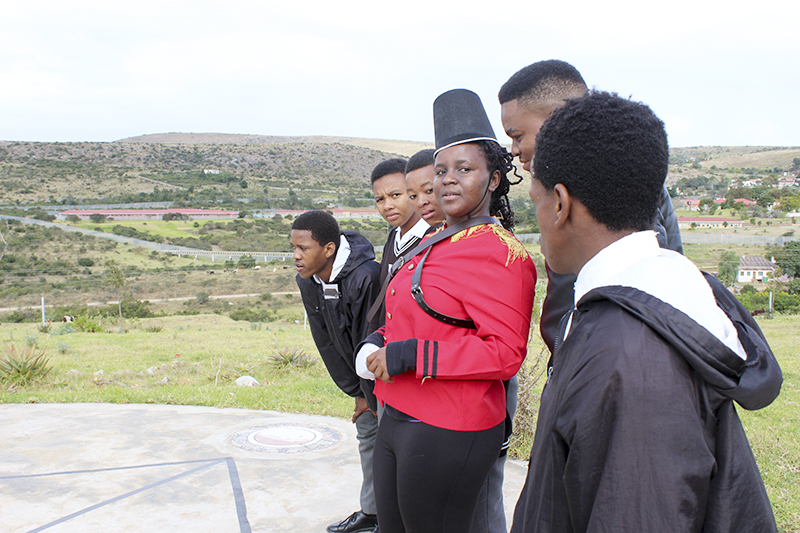Monday, 18 April, marked International Day For Monuments and Sites. Prof JULIA WELLS argues that a more mature and balanced understanding of our history could lead to a richer memorialisation.
The lead-up to the 200th anniversary of the arrival of the 1820 settlers in 2020 generated a good deal of anxiety about how it would be handled. It turned out to be a year of silence for everyone, but now we are beginning to find our voices again.
The anxiety was prompted by an awareness of two deeply polarised approaches to the 1820 settlers. On the one hand, there is a common view that we might call the ‘divine gift’ approach. This is a belief that European people were ordained by God as superior beings over the rest of the world and had an obligation and a right to overtake them all. In this discourse, almost everything the 1820 settlers did was brilliant and correct.
On the other hand, we have what we might call the ‘time reversal’ discourse. It takes the view that everything in Africa was fine until Europeans came. Settlers laid the foundation for all of today’s injustices and inequalities. Therefore, the best course of action is for them all to get back on their boats, go away and give the land back. Today’s extremes of inequality, defined along racial lines, stand as proof that the arrival of the settlers was disastrous. Let Africa become ‘normal’ again.
It is now time to find a far more mature and balanced understanding of history to overcome the emotions of both extreme views. This starts with placing the events of 200 years ago within their context. The right of conquest completely dominated the world until relatively recently. The long histories of all parts of the world, including Europe and Africa, show the continuous process of people experiencing hardship, migrating to new places, conquering the people there, and then creating a new social order. It was all based on the assumption that might is right. Undoing this reality is simply not feasible.
If today we are horrified by the Russian invasion of Ukraine, we have accepted the new era where the right of conquest is no longer morally justified. Historians claim that this massive shift in human consciousness came at the end of the two world wars in mid-20th century. Along with the end to the right of conquest came a new appreciation of universal human rights. This confirms that all people share the same human rights regardless of race, nationality, gender or religion. These are the values that most of us subscribe to today and should inform how we judge the past.
Above all, a search for a more balanced history has to commit itself to honesty. There are numerous topics that a new history could focus on. The bungling of the British in 1820 is one. The new settler scheme was saturated with fake news, corruption and chaos. But once here, the newcomers formed a wide variety of friendships and working relationships with both the Dutch-African farmers who preceded them and their new African neighbours. From the African side, there are also numerous untold stories of cooperation, friendship and hospitality. Such stories do not fit our current stereotypes.
This different kind of history could also lead us to a different type of memorialisation. If we more deeply internalised the connectedness between Europeans and Africans, we would aim for a better balance. Our current memorials to that era reflect the legacy of gross inequality that evolved over time. The huge 1820 Settlers Monument was built by high-level government funding and private donations from people who celebrated their ancestors.
By contrast, the Egazini Memorial Park, commemorating the 1819 Battle of Grahamstown, stands uncared-for and vandalised in Fingo Village. It is probably unknown to the majority of the residents of Makhanda. It started as a bid to have the scene of the Battle of Grahamstown declared a national heritage site to mark the Xhosa’s desperate stand to retain their land before it was filled with English settlers.
Another partly-completed part of the process was building an educational interpretation centre to inform locals and visitors about the site’s significance. It symbolised the African side of the story and offered powerful psychic balance with the 1820 Monument, as it was situated on the hilltop overlooking Fingo Village. The two would have been virtually on eye level with each other. Unfortunately, the limited funding from the national government was withdrawn. No wealthy private sector donors stepped forward.
The decaying state of the Egazini Memorial Park is in part due to the conditions of poverty in its surrounding community. People removed the fencing for their own private use, while vandalization of the mosaic images stand as reminders of the deep-seated anger of those who feel shut out. The local municipality has responsibility for the park but does not have the financial resources to maintain a heritage site.
With new and wiser histories might come a spirit of mutual caring. Institutions and individuals of privilege could take a more active role in constructing a balance. All sectors could invest in completing the Egazini Interpretation Centre to show that we can and should live as one people, overcoming the divisions of the past. A fresh consideration of the past helps us to no longer see the wealth and privilege of settler descendants as an unquestioned entitlement, but as a product of its time. In our current worldview, the lament of those who struggle to overcome their legacy of subjugation cannot be ignored.
Julia Wells is head of the Isikhumbuzo Applied History Unit, Rhodes University


